.. and then some …
Mysteries solved
Statues
On our first day in Niigata I photographed some statues and indicated I didn’t know what they were. It was raining and I didn’t take a lot of note, including their (significant) number, but today we retraced those steps and I realised of course that they were the Seven Lucky Gods, or Shichifukujin, some of whom have appeared earlier in this blog. These deities of good fortune tend to be chubby and often elderly. (Actually, those fairy tale Seven Dwarfs come to mind!) They are often shown, as in the first relief-like statue here, travelling together in their treasure ship or Takarabune. They are an eclectic lot, coming from India, China and Japan, and date back, I believe to the 12th century. Japan’s main contribution is Ebisu, the god of fishers, merchants and agriculturalists. He is often depicted, as in the Niigata group, carrying a sea bream.
Tsurui Museum
We concluded that the reasons we had trouble finding this museum’s entrance were that it was probably closed and that we thought (erroneously as it turned out) it was on the 5th floor. It has no permanent exhibition, and its new exhibition is opening on Monday (tomorrow). Its website is only in Japanese, and other search hits tended to find listings for it rather than useful current info – so we may be wrong.
After this little exploration, we went to our pick-up place, and set off with Rie and her family for today’s adventure. En route, Rie suggested we play a word game – that one where a person says a word, and the next person has to say a word starting with the last letter of that word. However, in Japan, because of its character-based language, the last “letter” was really, in our parlance, the last “sound”, like “shi” or “ga”, for example. We were allowed to use English words, but we had fun trying to come up with Japanese words, like, say, “sashimi” or “nori”. We learnt (once again) how easy it is for us to get the sound wrong, resulting in Rie thinking we were saying a different word to the one we thought we were saying, as in sake (salmon) vs sake (sake wine).
Tsugawa
Anyhow, all this passed the time very satisfactorily for us and the kids – and even our dedicated driver had the odd laugh – so that suddenly, though it was really nearly an hour, we had reached our destination, Tsugawa.
Tsugawa is a little town in the mountains east of Niigata city. If you’ve heard of it I’d be astonished. In 2003, it had 5,000 people, but in April 2005, it was merged with the town of Kanose, and the villages of Kamikawa and Mikawa, to create a new town, Aga (or Agamachi). Just over a year later, in mid 2006, our son Evan went there as a JET. Today’s trip down memory lane was to visit Tsugawa with Rie and her family, as this is where we met Rie who was a JTE (Japanese Teacher of English).
Fox Festival
Now Tsugawa has one maIn claim to fame, its fox legend and consequent Fox Festival. The main festival is held annually on May 3. It stems from an Edo Period folk legend about foxes living in Kirinzan (Mount Kirin). There were many sightings of a light they called the kitsune-bi (fox-fire), more sightings here, so the story goes, than anywhere else. Foxes were believed to have power over fire. In these old days weddings would go late into the evening. People paraded, carrying lanterns in the dark, which, apparently, was seen to emulate this fox-fire. The Fox Festival – which features a fox wedding parade – probably originated from this old lantern light parade. It has become a huge event in Tsugawa.
Today, Sunday, just so happened to be the secondary festival when, as I understand it, the bride and groom, who were seen off in May, return. There’s dancing, people wearing fox make-up, and of course food, toy and gift stalls. It’s a relatively small affair that runs from 10am to 2pm but is clearly a loved community one.
This was all fun, but even better was that, as planned, we caught up with Yasuko. She, with her mother, ran one of Evan’s favourite Tsugawa izakayas, Minagawa-ya. They still run it, except that Yasuko’s daughter has now joined them. Yet another of these lovely little family businesses that you see so frequently in Japan. Yasuko was very welcoming to the young JETs in town (and to us when we visited him), so has a fond place in our hearts. (She and I stay in contact via social media.)
As for food, it was mainly, for us anyhow, yakitori, soba and inarizushi. Unfortunately the mochi ran out before we got to it.
Fox Museum
Of course, you can’t have a legend and a festival, without having a museum, so the Fox Museum was our next stop. We had visited it before. It has no English interpretation, but with its outdoor critter sculpture, its beautiful setting on the Agano River within sight of Kirinzan, and its very Japanese style building, it’s a delight to visit and wander around. All six of us enjoyed it in our different ways, I believe.
Chestnut picking
The next activity Rie planned for us was to go chestnut-picking. This was in Kamikawa, that little village that also merged to become Agamachi. What fun this was – for Len and me who had never done this before, and for the kids who like most kids enjoyed doing something active that involved picking food! It was a lovely afternoon – partly cloudy, partly sunny, with the temperature in the low 20s and comfortable humidity. What was not to enjoy about poking around the ground with our giant tongs and buckets looking for chestnuts?
But then came the spanner in the works. Rie assumed we could take the chestnuts home with us but of course, as we explained, Australia’s Customs laws would not allow that. So, given it was still early, another activity was inserted into the day – returning to Rie and Atsushi’s home so she could cook some chestnuts for us to eat. This we duly did, surprising Len, who had once had chestnuts explode on him in my brother’s kitchen, with how simple it can be. (By this point in the blog, Hannah, who loves chestnuts, has probably turned green!)
Oh, and while waiting for the chestnuts to cook, we were introduced to some Japanese children’s games, though we ended up playing them with the adults as the children preferred the TV!
Hegi soba
The day ended with that specialty of the region that Rie had wanted us to try yesterday, hegi soba. This type of soba is served in a wooden dish called a “hegi” and is made with funori (seaweed). This gives it the sort of chewy texture that distinguishes it from others, and that I really like. And it is served really prettily – in little individual twirls that are supposed to be individual mouthfuls, I gather. You eat it the traditional way soba is eaten, as we described in our Madoka and soba post. It’s interesting how each visit here, we pick up new bits of food and drinking culture. This visit, it’s mostly been soba and sake. We had eaten/drunk both before of course, but this trip we’ve learnt more about them.
And then, it was over. What a fabulous weekend we’ve had with Rie and family, and how royally they treated us. It was great to meet her husband and children, and special of course to have all the local insights they had to offer. But, best of all, it was wonderful to further consolidate this friendship that started back in 2007.
We feel very lucky to have had such warm and generous family/local-oriented experiences in Japan.
And some Stills …
And some Movies …
Click here to view today’s video clips
Today’s Challenges …
- Playing a word game and trying to use only Japanese words.
- Finding the biggest, freshest chestnuts we could.

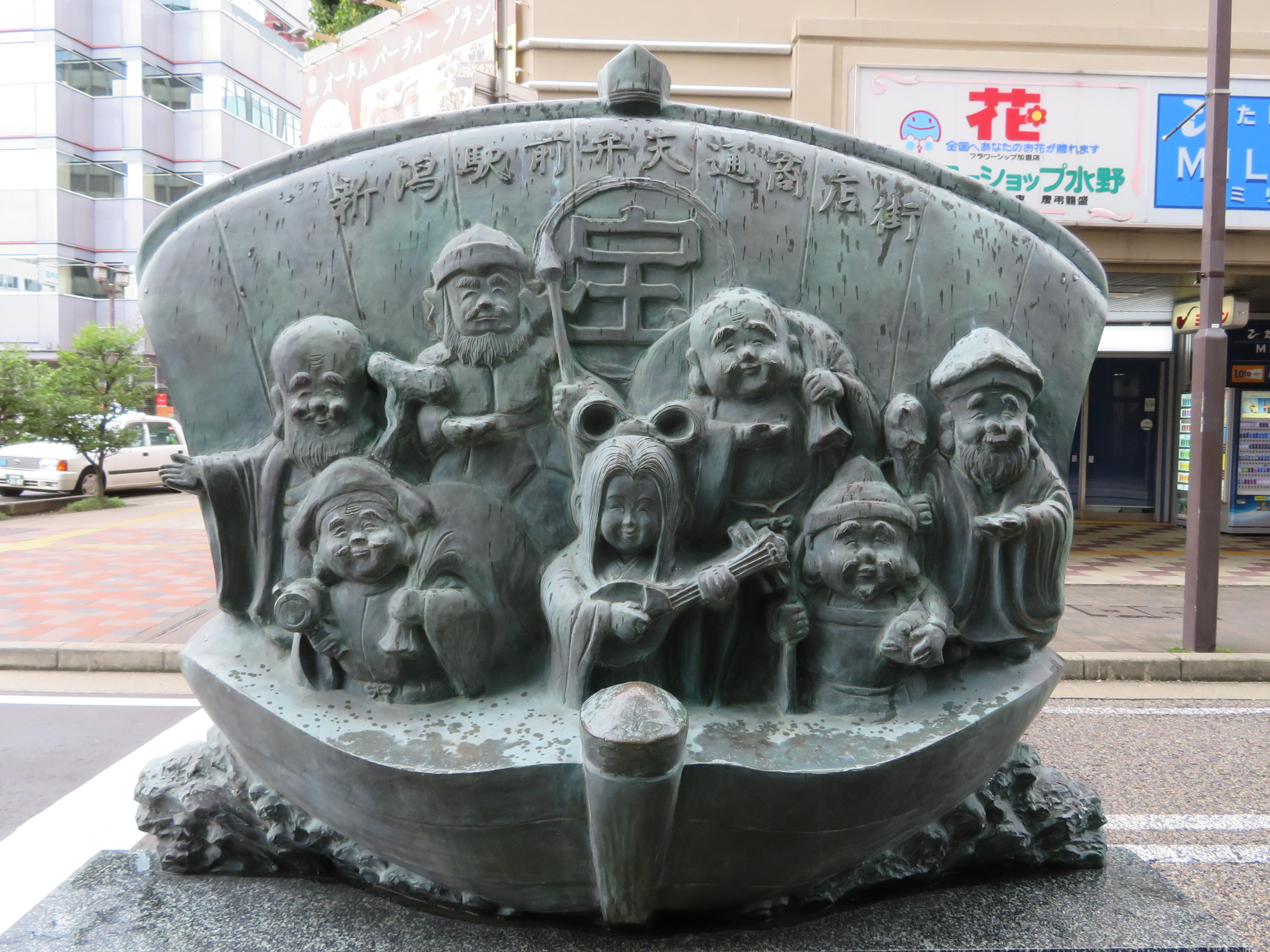

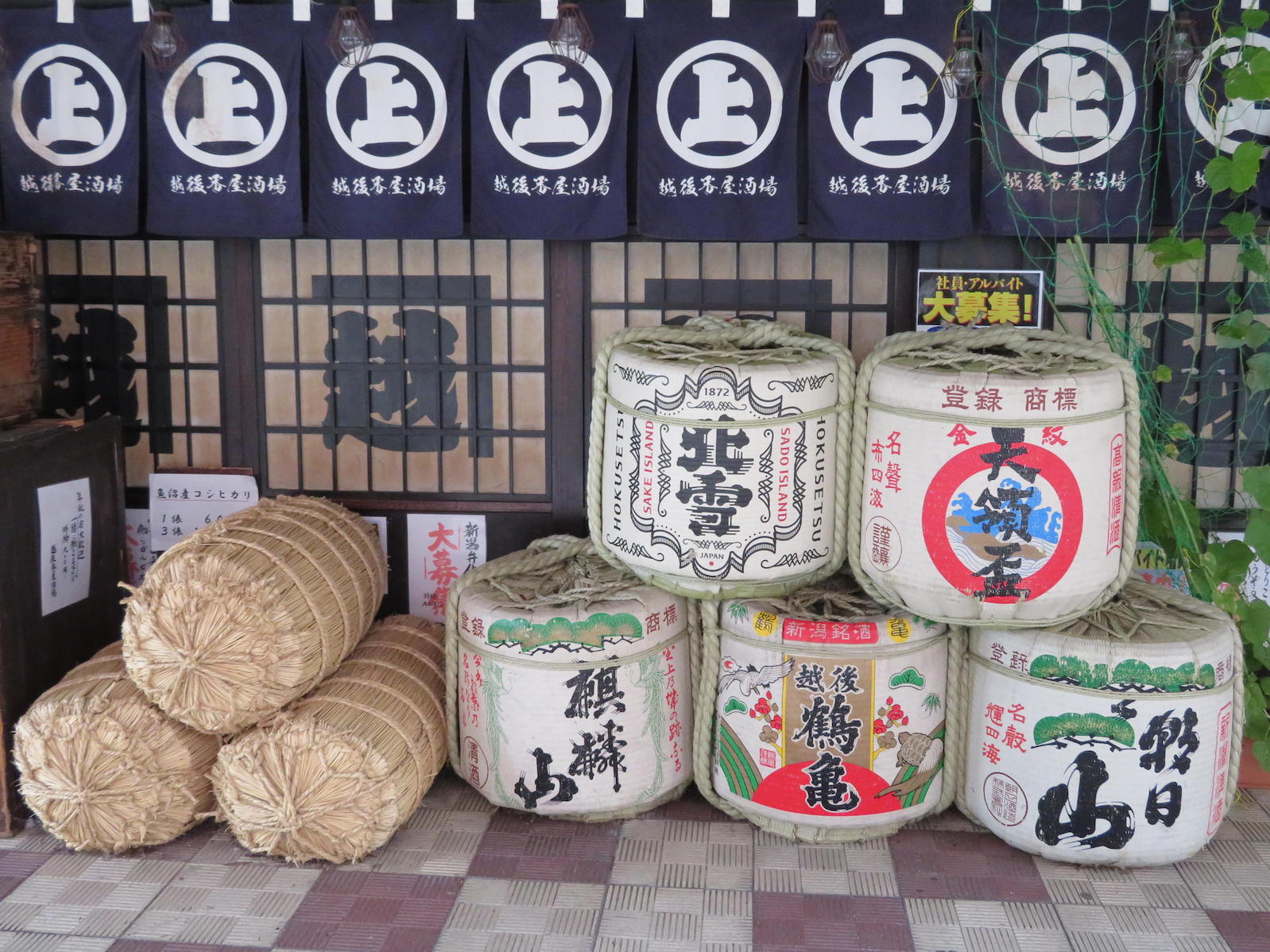
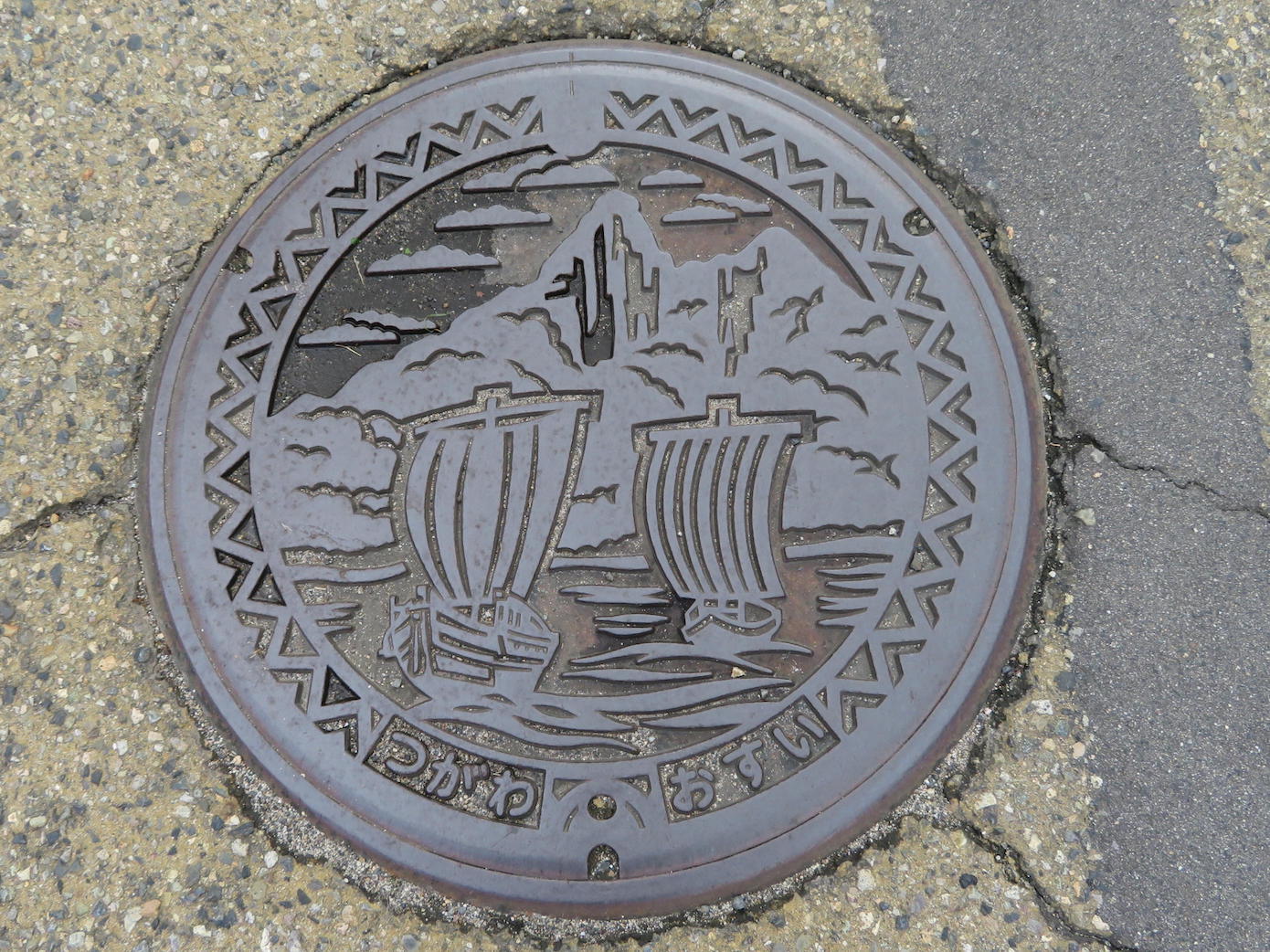
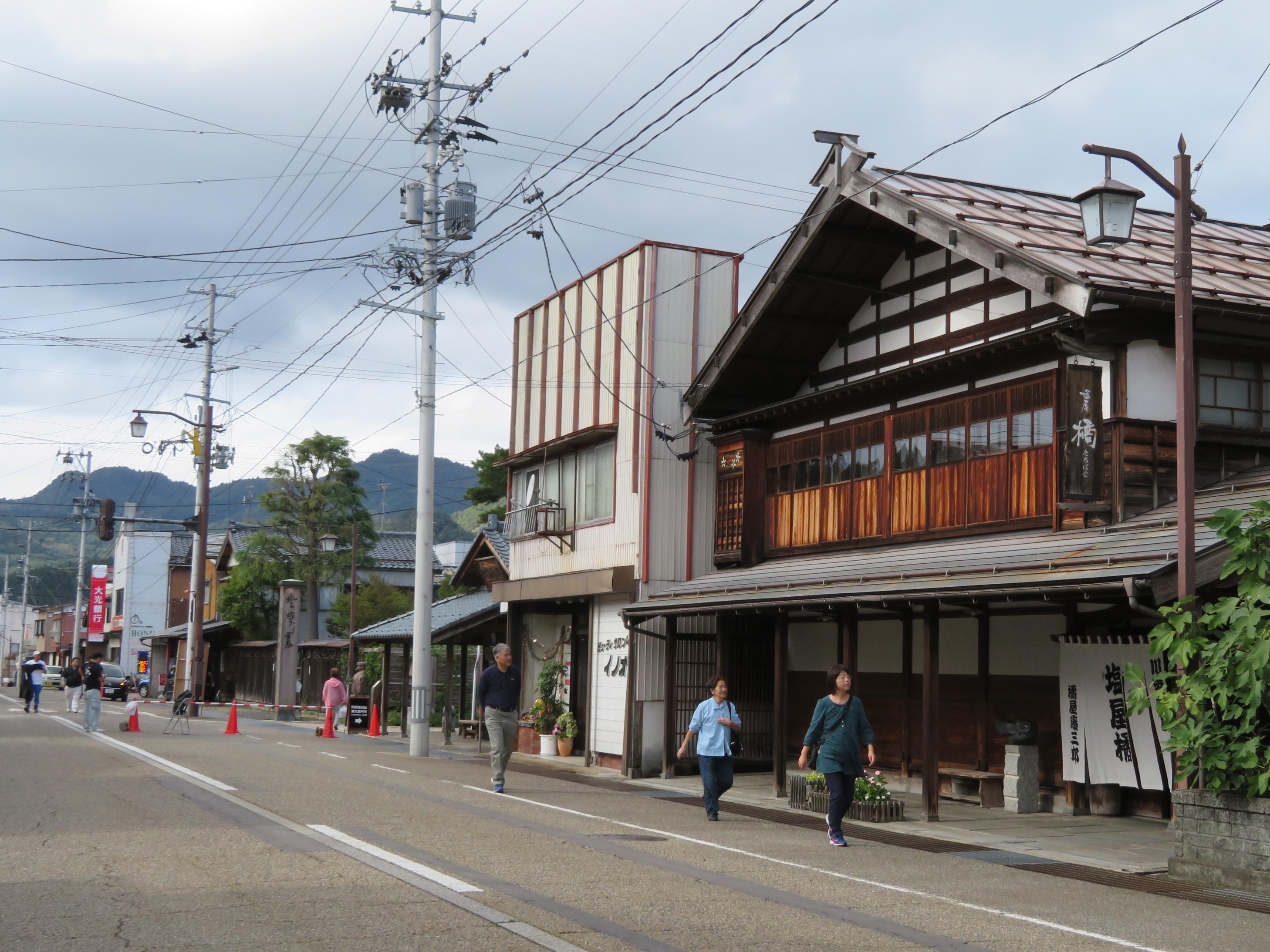
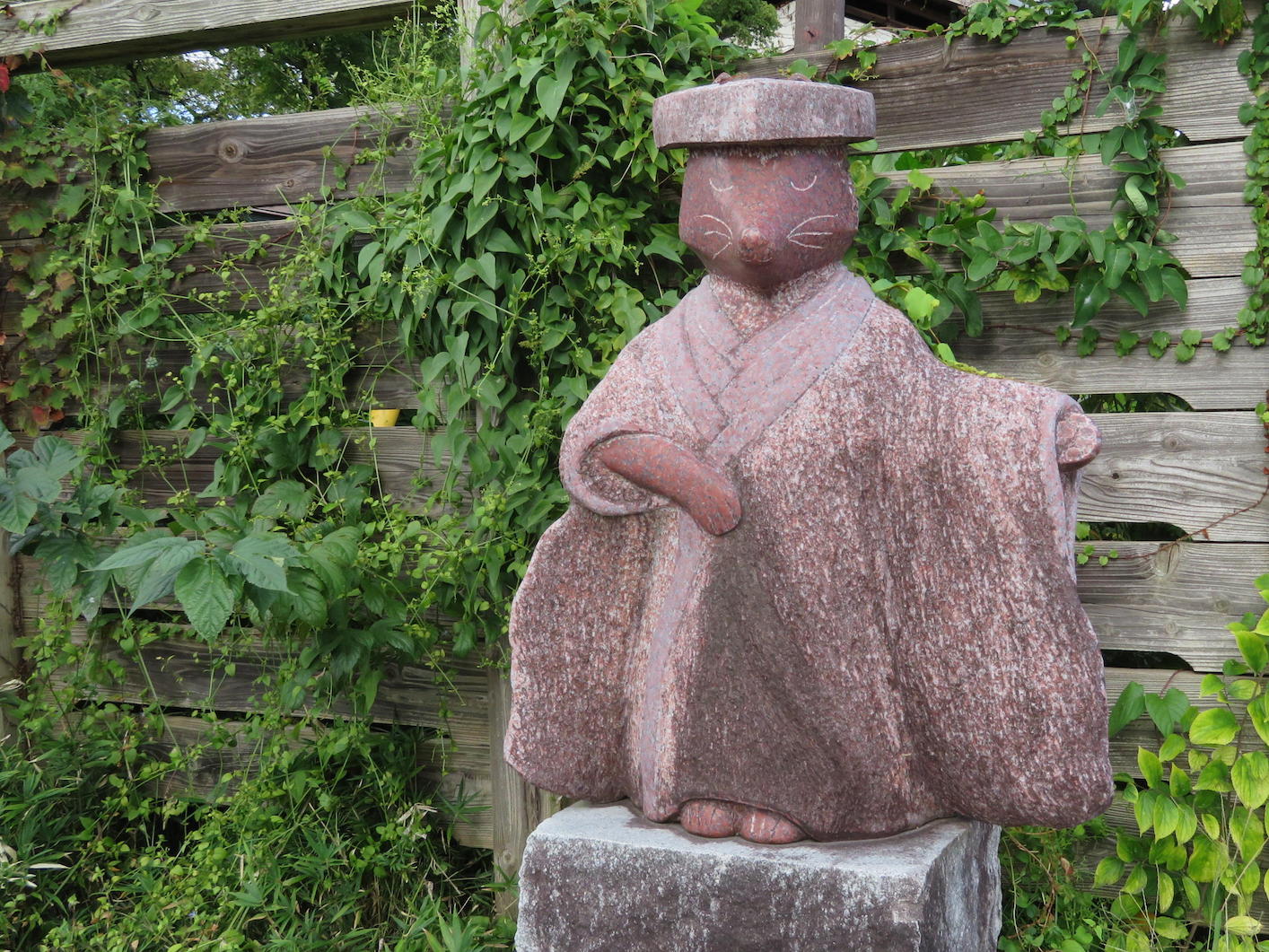
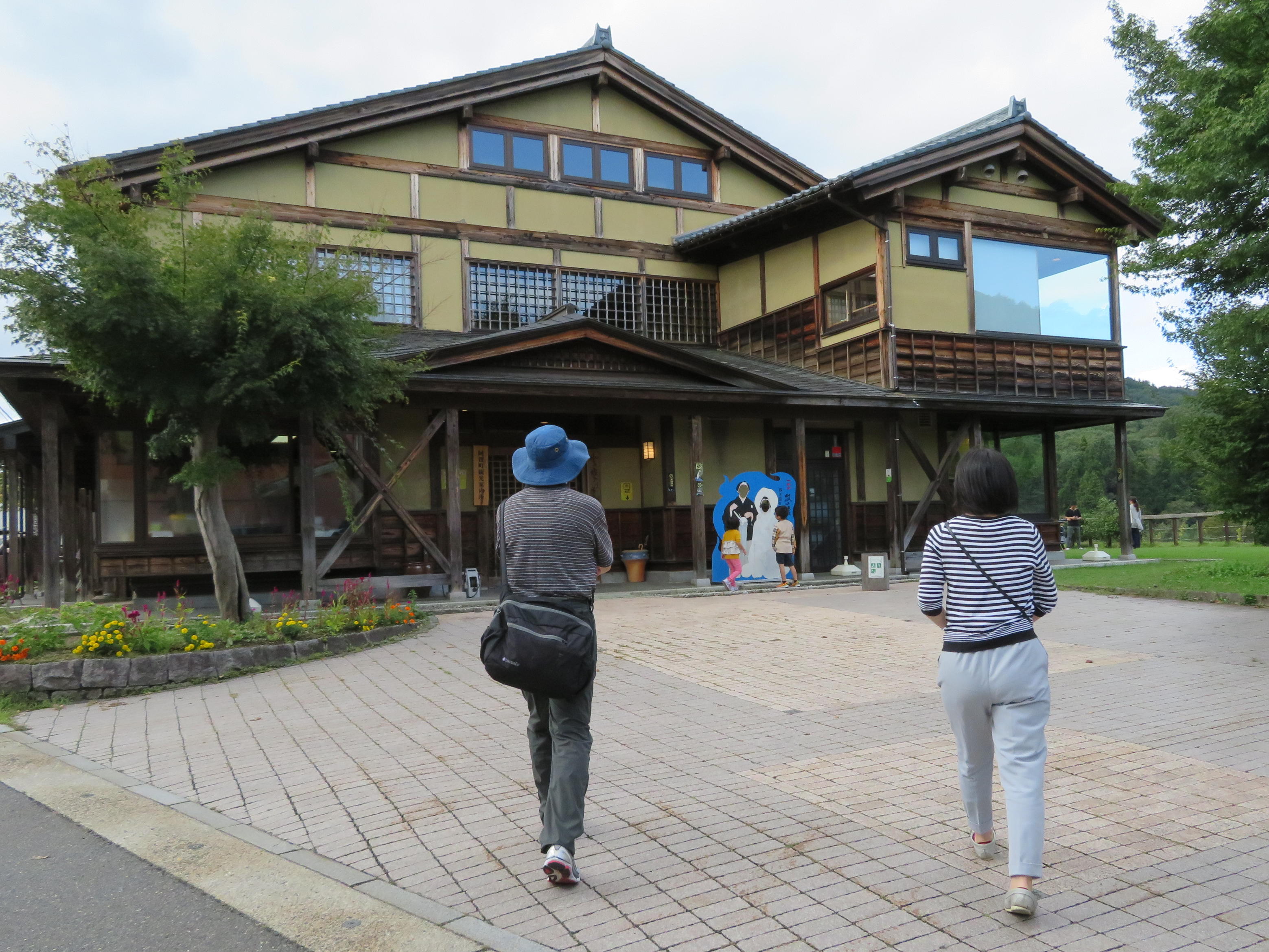
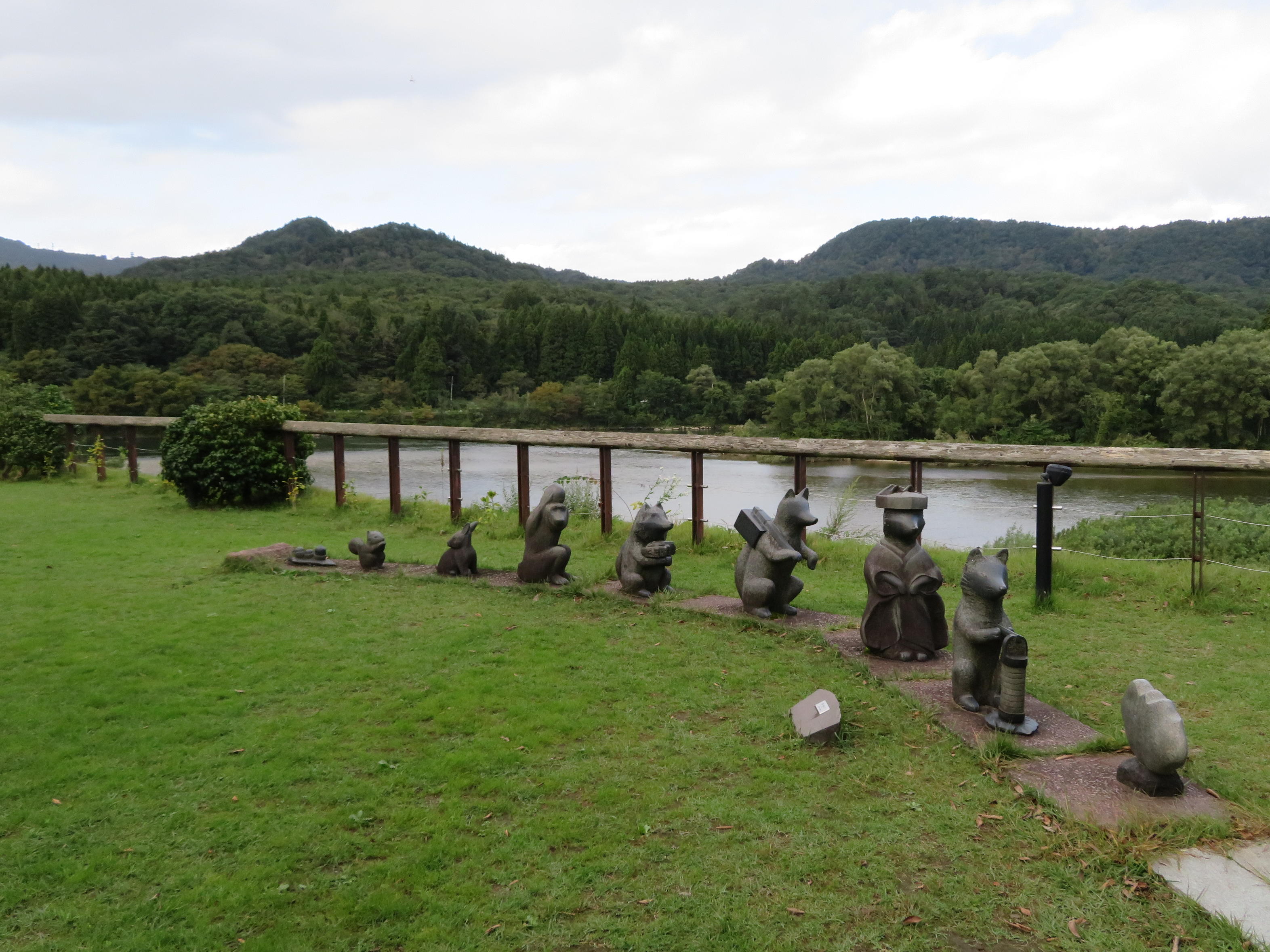
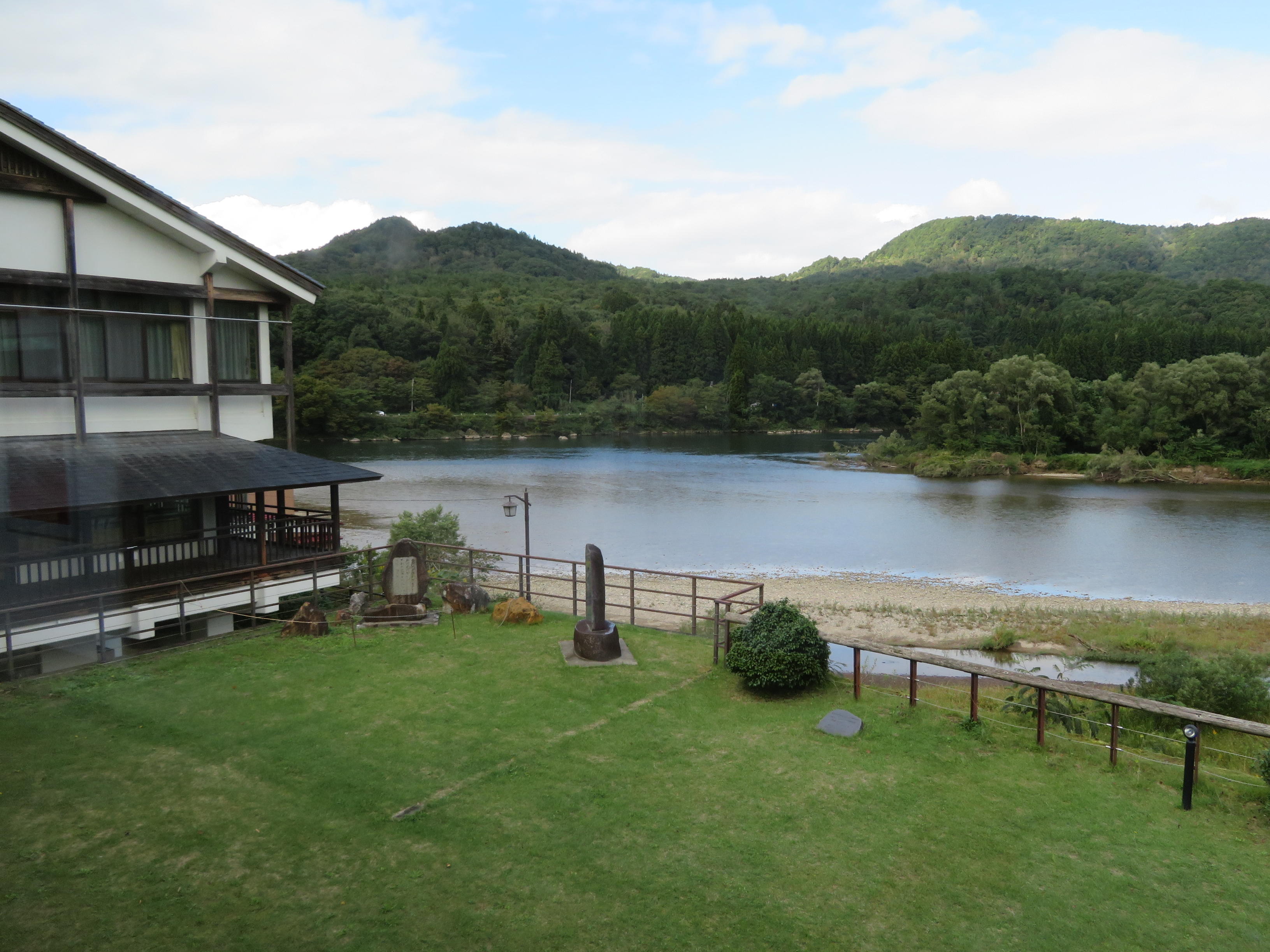

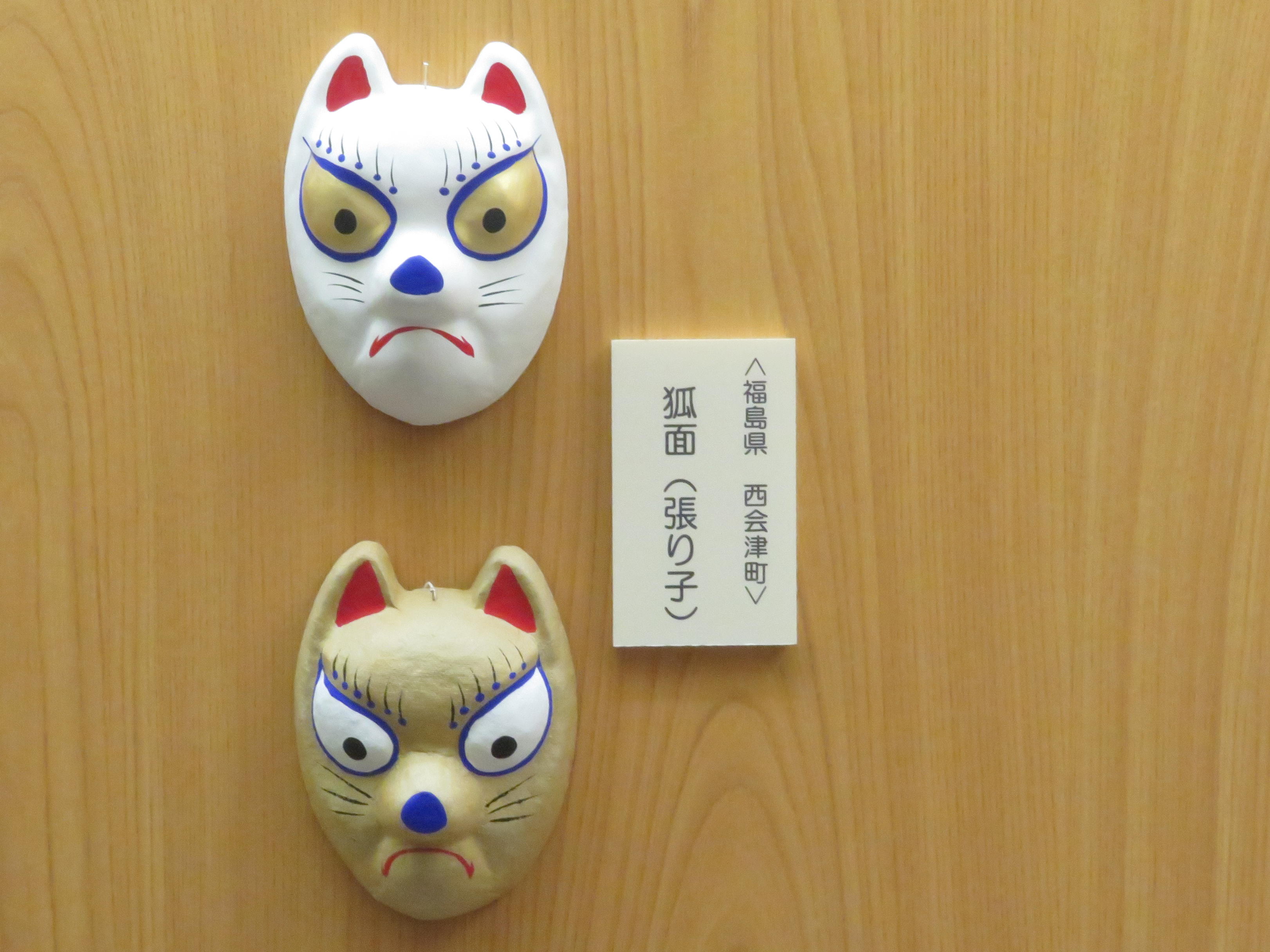

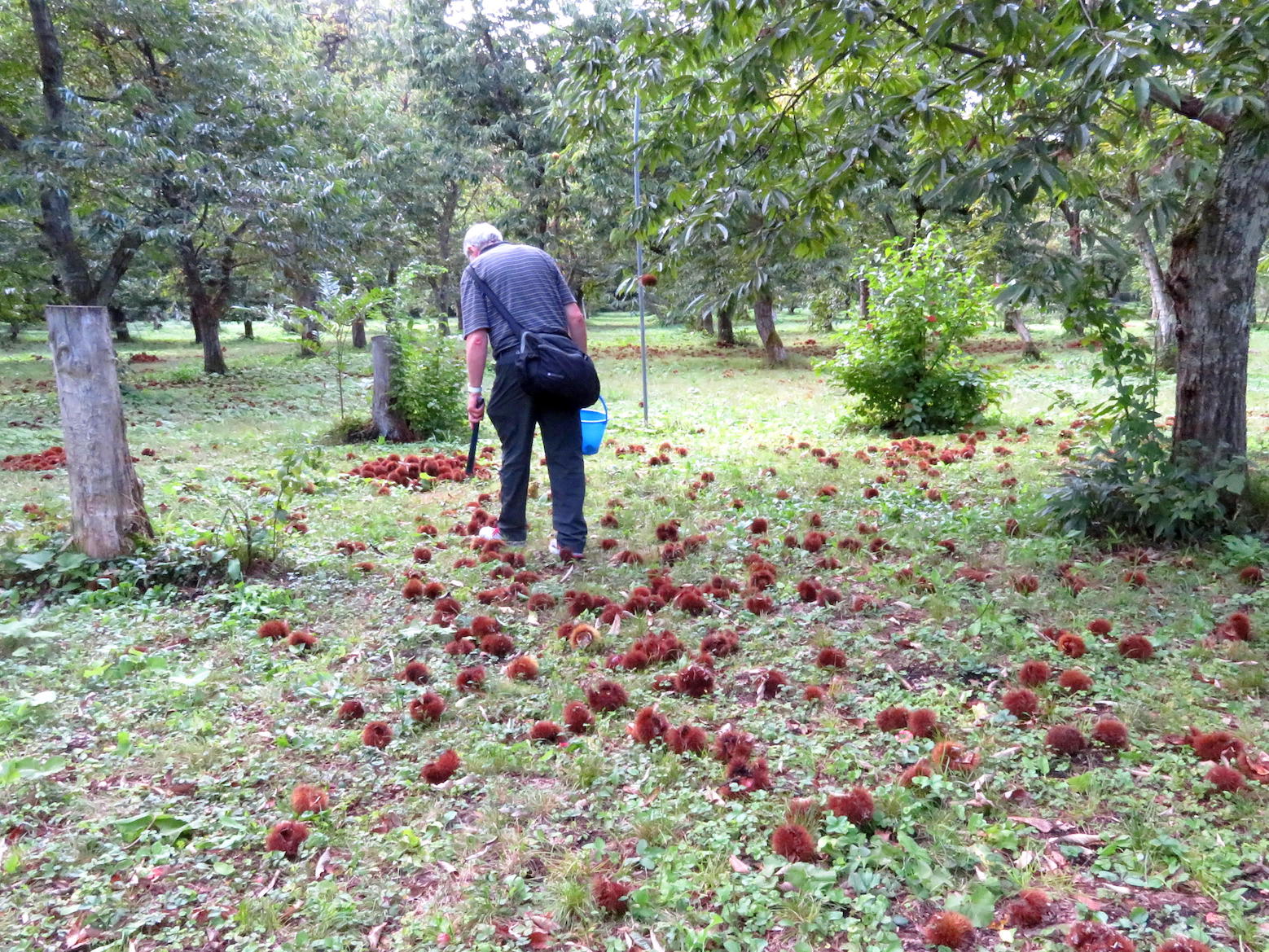
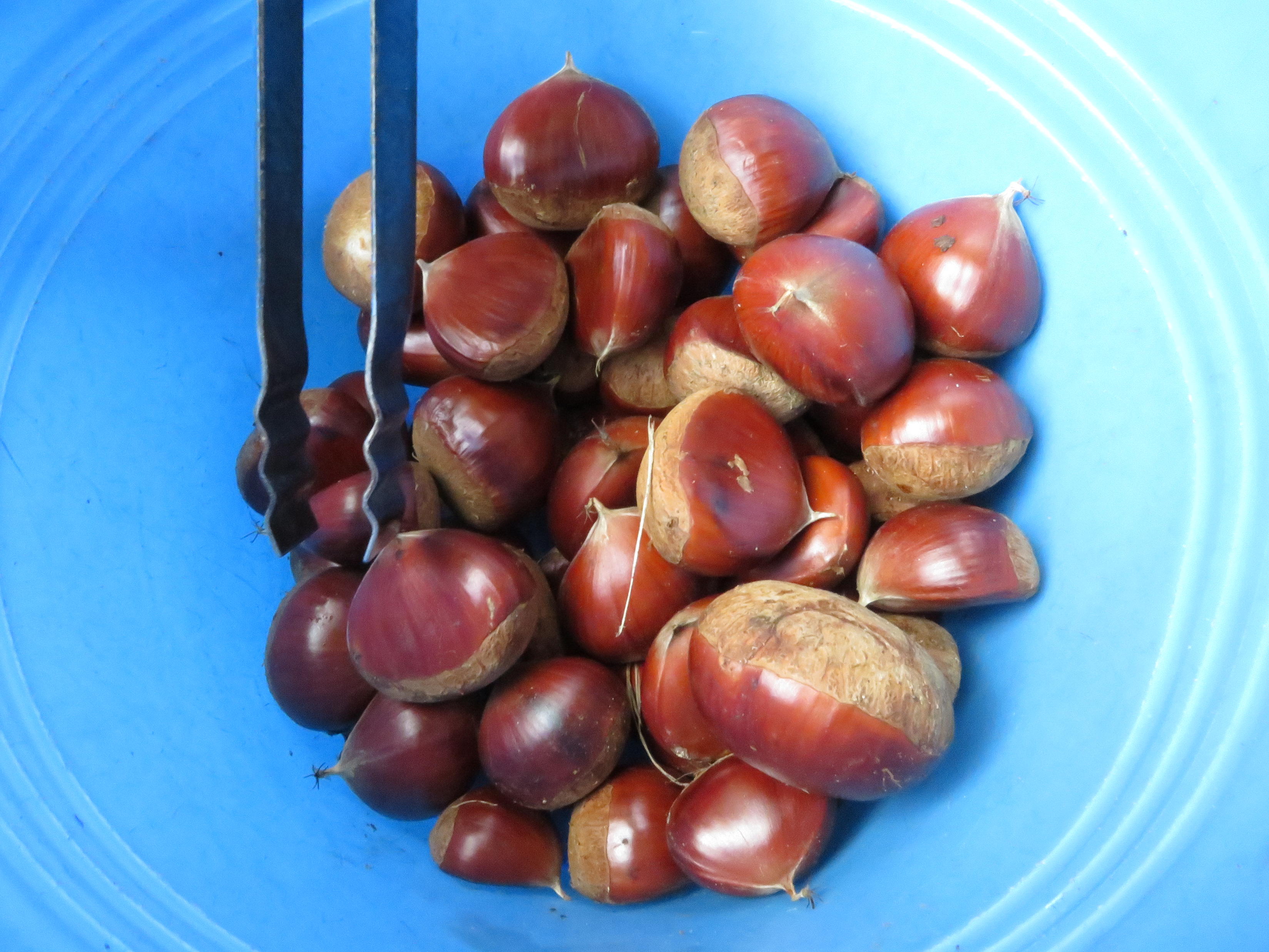
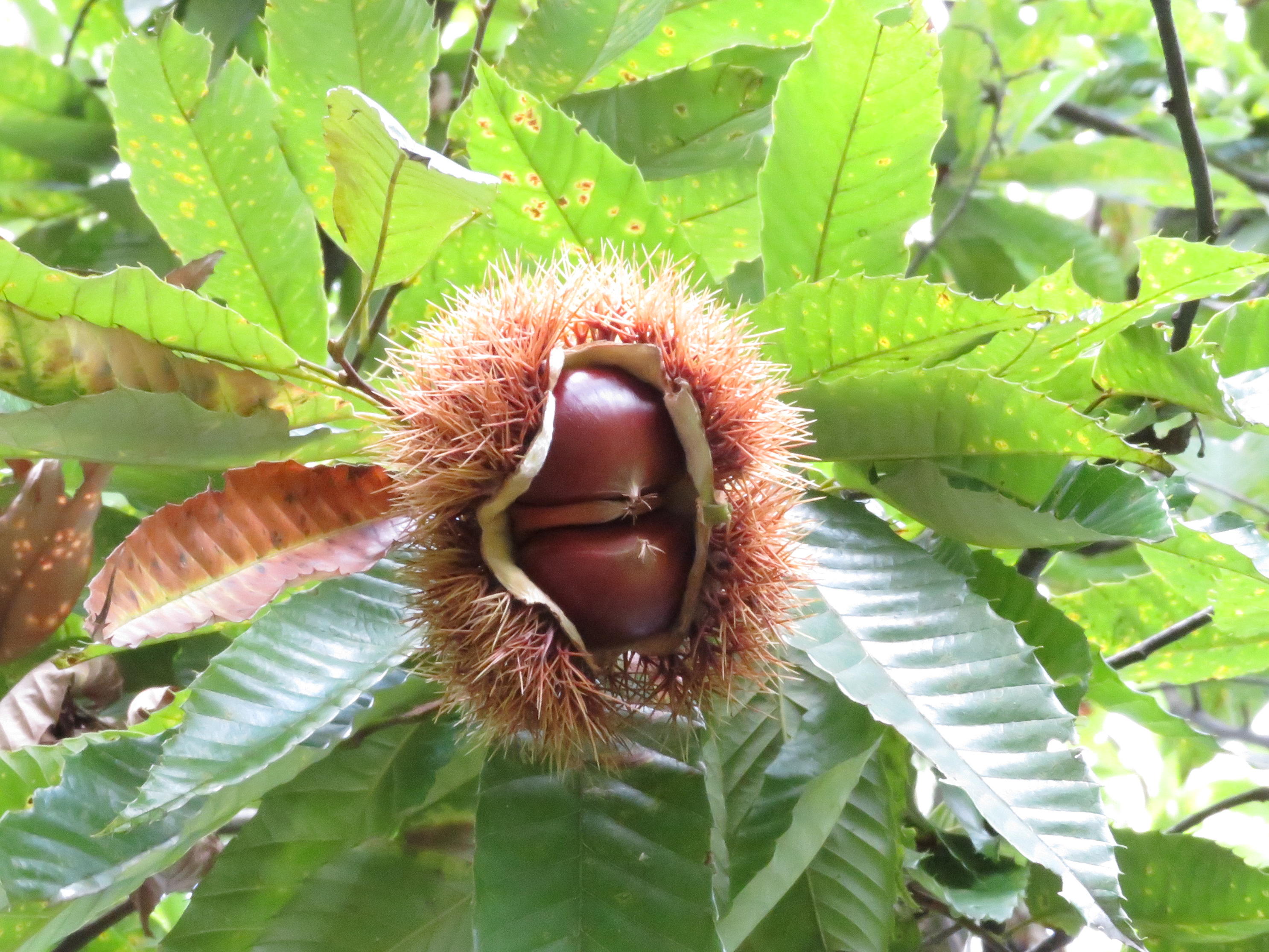




The hegi soba sounds delicious with its chewiness. You had a very foxy themed day with the museum and the inarizushi. By the way, that word game is called shiritori. What a wonderful day!
Thanks Carolyn, particularly for the name of the word game.
“These deities of good fortune tend to be chubby and often elderly.” Did you think of me at all ? [grin]
The old woman at the beginning of the festival footage ! – standing there with her hands on her hips, looking like she’s been positioned there by the Director … 😀 Those kids were pretty good with their dance, eh ?!
I’ve found another strong link with Italy ! Not only do the Japanese love to call restos by Italian names, but they have a chestnut industry. I’m thinking there should be some kind of ‘partnering’ going on.
I’m not telling who or what I thought of, M-R. Our readers can make any assumptions they like! the the dance it seems that not only the performers knew it, as bystanders, particularly children, danced along. I love that sense of culture.
As for Italy, interesting comment. Overall we probably see more pointers to France and all its pastries, here, than to Italy.
Yep. I am VERY UPSET. But also thrilled for you – what an experience!
Thanks Hannah for your generosity!
Chestnuts! They are the devil to peel. I have a recipe for a festive chestnut pie that is great for vegetarian friends at Christmas but I only ever used fresh chestnuts once. These days I use the tinned ones from France.
Ha ha Lisa, they aren’t the easiest nut to manage. The women in that chestnut fa, m photo were doing some peeling and I didn’t envy them. However, when the cooked them, she just boiled them for 20 minutes then cut them in half – which needed a little but not excessive force. We then scooped out the nutmeat with spoons. But she says she mostly cooks them in a rice cooker!